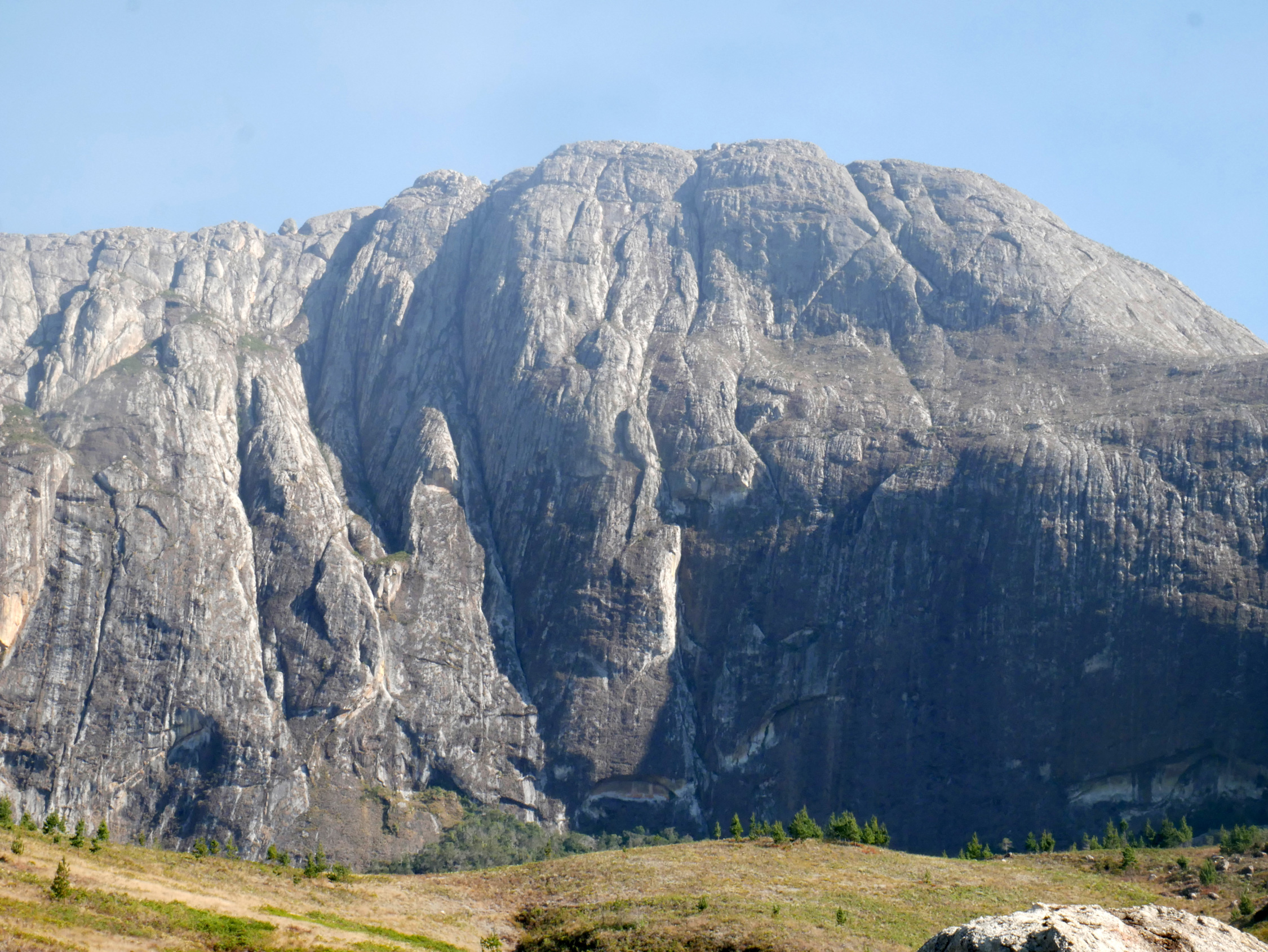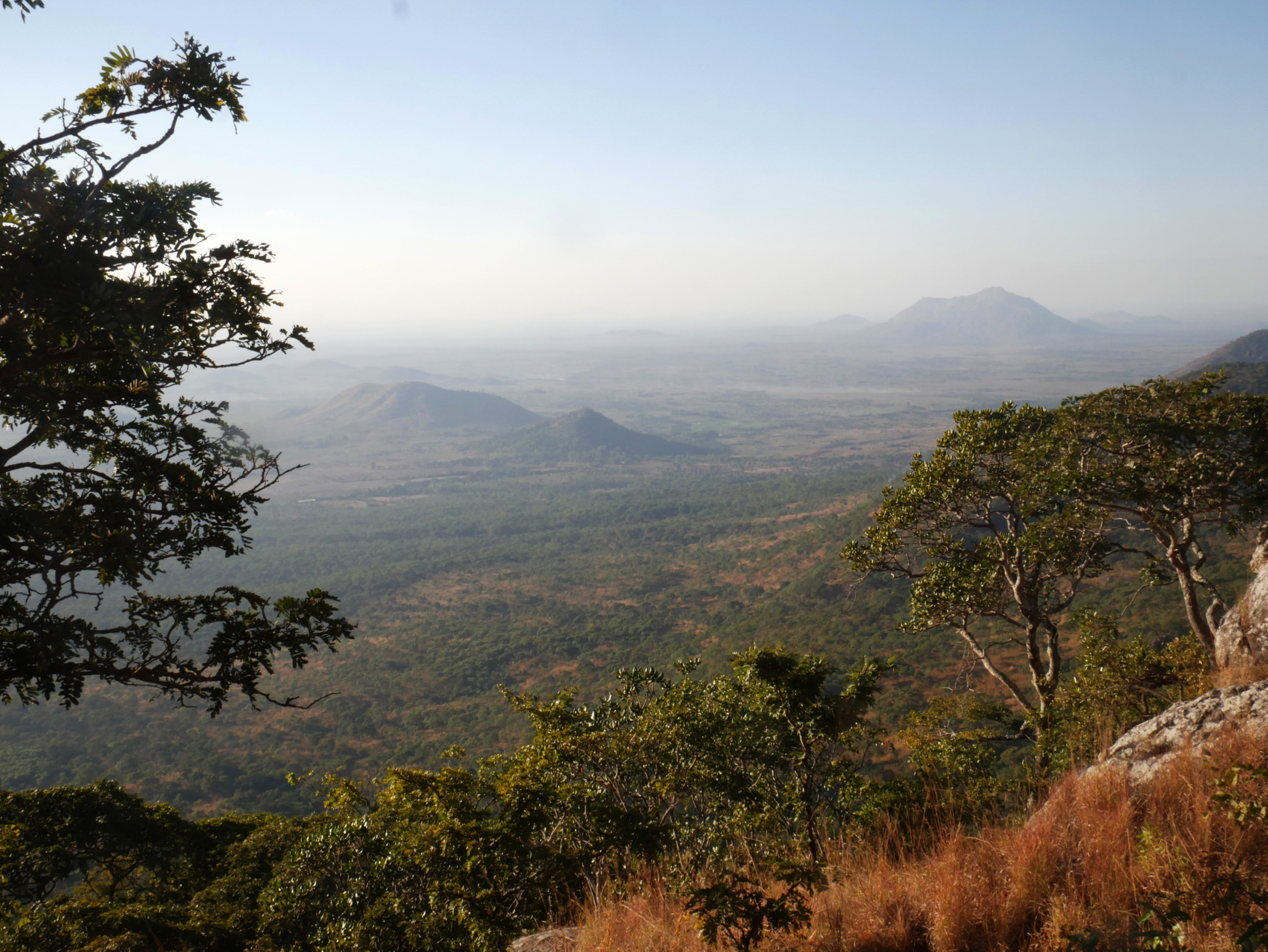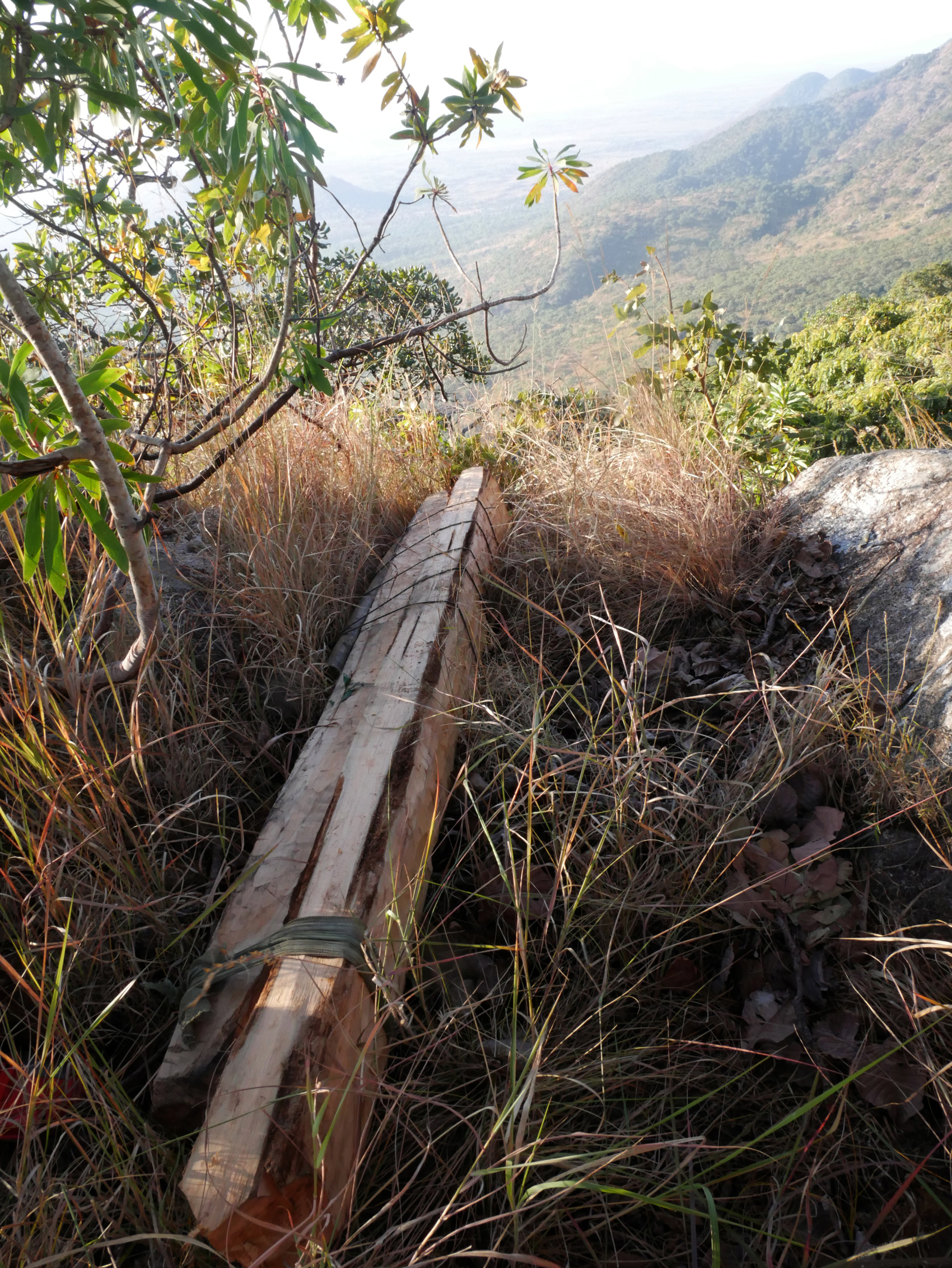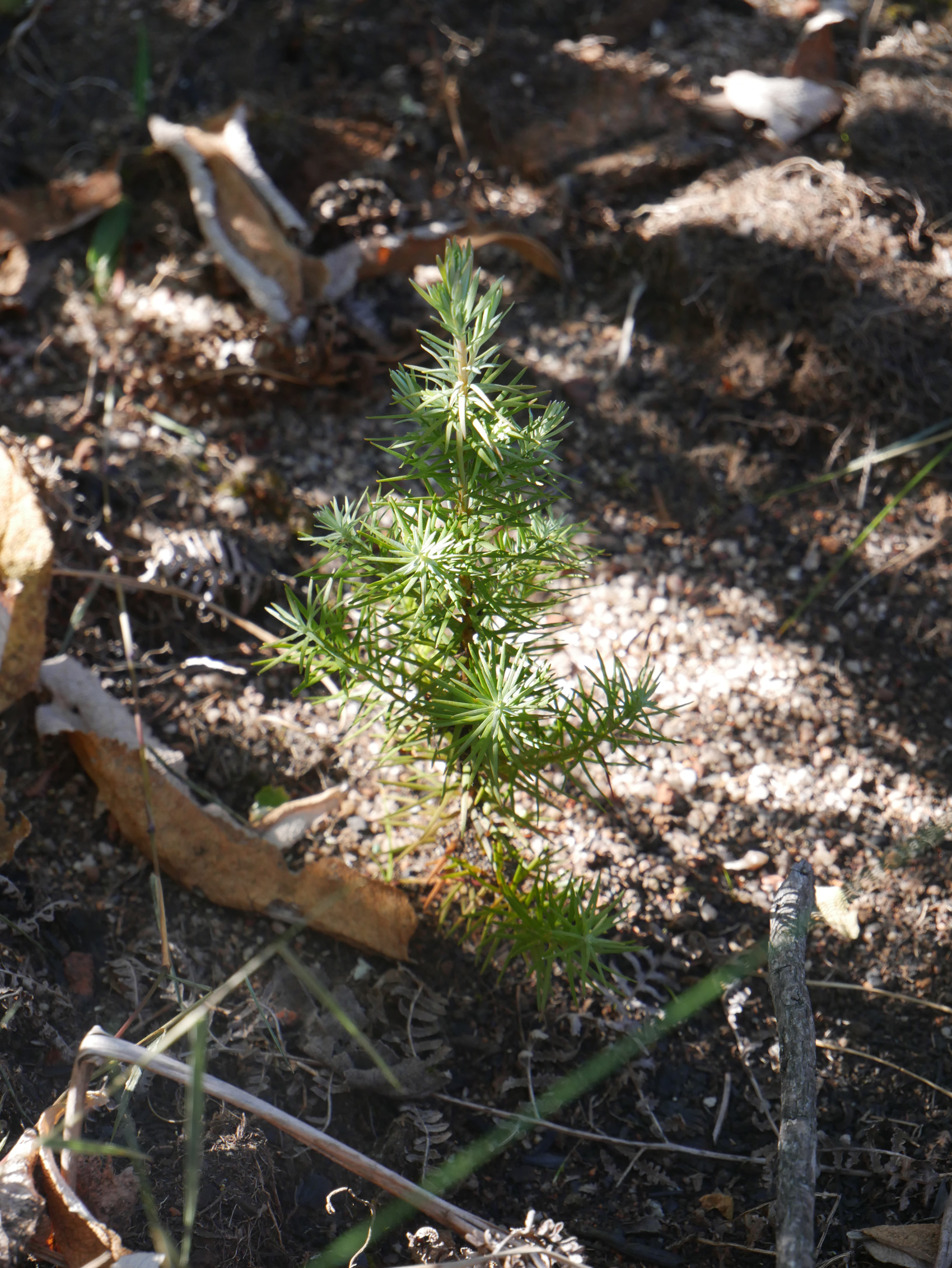New value for an endangered tree to conserve Mulanje Mountain
-
Country
Malawi -
Region
Africa -
Programme
Global Trees Campaign -
Workstream
Saving Plants -
Topic
Tree Conservation -
Type
Blog -
Source
BGCI
Fighting logging and damage to a unique environment by exploring ways to give the Mulanje Cedar tree more value to local people.

A unique island in the sky
Standing beneath the huge expanse of granite that rises to 2,500 m at the Chambe peak of the Mulanje massif your heart races. You find yourself staring at it from a beautiful plateau, an ecological island in the sky. It is not the start of the ascent though, far from it; it was a day hike just to get here.
Malawi is flat. Not completely, but largely between 500-1,000 m above the sea and landlocked. From these extensive lowlands, features like the Mulanje Mountain spring up, dotted across the landscape. Some, like the Mulanje Mountain Forest Reserve, have protected status because of their distinctiveness.

The sudden appearance and height of Mulanje Massif creates an exceptional environment atop of a 2,000m high plateau. There, with little connection to other similar habitats, unique, endemic plant species have evolved, adding hugely to the area’s conservation value.
A long way up the mountain
I visited recently in preparation for an exciting new phase of our work on Mulanje Cedar, Widdringtonia whytei, to investigate a new use and improve its restoration on Mount Mulanje.
The hike began at 800m in Miombo woodlands, a valuable vegetation type found across Southern Africa with a wide range of plants. These woodlands historically provide a plethora of foods, fuelwoods and medicines to local people across southern Africa.
As we ascended, I quickly saw evidence of the influence of people: bark chipped off for medicinal uses, and stumps of trees removed for firewood. A burnt log showed the method of using fire and smoke to harvest honey from bees.
Mounting troubles for mountain species
As we moved higher, we came across timber thrown down by a retreating logger. These planks, with a strong and spicy aroma, are the Mulanje Cedar, a large and strong tree with a good, durable timber. It only grows naturally on Mulanje Mountain but is Critically Endangered due to logging, almost to the point of extinction in the wild.

Few adults remain and the planks may be the scraps left from past logging. People are even dismantling bridges, which were originally made of Mulanje Cedar, as nothing is left untouched. This is all that remains for loggers.
As you reach the plateau, the giant Mulanje Cedar stumps begin to appear – some metres in circumference. You also see other species’ stumps, like Podocarpus milanjianus, now targeted because the Mulanje Cedar is gone. These trees now face a similar fate to Mulanje Cedar; their harvest represents broader environmental damage to the mountain.
Restoring a magnificent tree
We did not visit to see this damage though. We came to view the sites replanted by the Mulanje Mountain Conservation Trust (MMCT) and local communities, who worked with the GTC, BGCI, and the Forestry Research Institute of Malawi; supported by a previous Darwin Initiative funded project that has just ended.
Seedlings of one or two years old are thriving in sites both covered with bush or in the open. Row upon row across the plateau add up to hundreds of thousands across the massif. Since it takes 40-50 years for these to be large enough for loggers’ axes, fires are the seedlings’ main threat.

We passed a few such fires, caused almost exclusively by people, set for use in hunting, cooking or mischief. To counter this, MMCT organises groups to live on the mountain in the dry season to reactively deal with fires as they appear and to maintain a thorough system of firebreaks.
Added value for the Mulanje Cedar
The fragrance that fills the air near the remnants of the once majestic Mulanje Cedar may also help in the fight to save it from extinction. Research will help us to understand whether essential oils in the Mulanje Cedar could have economic uses, for example in aromatherapy, medicines or pesticides.
MMCT will also work with Malawian research partners to see which parts of the plant provide the best oils – leaves, branches or heartwood – and try to uncover how environmental conditions or plant age affects oil standards. The results can then direct sustainable harvesting and processing which local communities can use in home gardens.
This will create an alternative value to local people that could reduce the desire to log species unsustainably on the mountain. At the same time, new restoration trials on the mountain will attempt to reveal the best way to plant seedlings to improve survival and growth of young trees.
A mountain of alternatives
This is not all though, we also want to identify other species that are utilised locally, might be under threat, hold a market potential and can be propagated and harvested by local communities. These could create further income streams, taking more pressure off the mountain’s resources.
Building a model for development of Mulanje Cedar and using this for other species, should increase the value of plants to local people. Through this, the new project has the exciting potential to increase the protection of Mount Mulanje and to help in the fight to stop extinctions.
This work is part of a project that is funded by the Darwin Initiative, and which builds upon our recent Darwin Initiative funded work on Mulanje Cedar.
Written by Alex Hudson for GTC. Alex is managing plant conservation projects in Africa (Malawi and Uganda) and the Indian oceans (Mauritius and Rodrigues). He is interested in ethnobotany and the interactions between conservation and development at the local level.

Become a Member
Be part of the largest network of botanic gardens and plant conservation experts in the world by joining BGCI today!
Support BGCI
You can support our plant conservation efforts by sponsoring membership for small botanic gardens, contributing to the Global Botanic Garden Fund, and more!